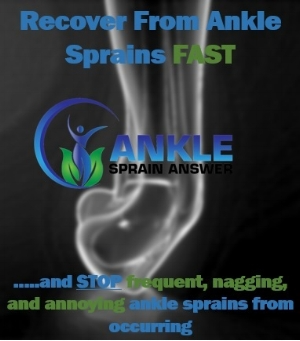Ankle sprains are one of the most common injuries. Some have estimated that ~2,328 people sprain their ankle a day. For some individuals it takes months to recover, others a couple days/weeks. In either scenario, the treatment of choice most people would have you believe is to rest and ice. However, very rarely is resting the treatment of choice for any injury, but for whatever reason this seems to be the common recommendations given to individuals with ankle sprains. This could be one reason why your recovery from an ankle sprain is taking so long. The other problem is that it often leads to limited ankle mobility down the road even if the pain is gone. Limited ankle mobility has further implication such as knee pain, ACL injuries, hip pain, and low back pain.
Unfortunately some individuals will experience frequent ankle sprains. Which can be frustrating, as they seem to happen more and more often. Preventing you from playing, practicing or performing the activities you enjoy on a regular basis.
So what should be done?
First, start moving in a pain free or tolerable range of motion, no matter how small this may start out to be. Also, a very effective treatment to try is submaximal isometrics.
Tip: Do not discount the effectiveness of this simple exercise and its ability to get rid of your pain and start to improve you walking quickly. As an added benefit, this strategy can often be started immediately after spraining the ankle to facilitate the healing process.
Finally, retraining your foot and ankle positional awareness is important to prevent future ankle sprains from occurring. When individuals experience frequent ankle sprains, most commonly they have a reduced ability to react to situations and stabilize the ankle for protection. In many circumstances, this exercise can be started day 1 as well as better help prevent you from experiencing frequent ankle sprains in the future.
If you would like to recover faster from ankle sprains and prevent future sprains from happening so you can stay active or playing the sport you enjoy. Check out the Ankle Sprain Answer.

About the Author: Dr. Greg Schaible is a physical therapist and strength coach specializing in athletic performance. He attended The University of Findlay as a student athlete. As an athlete he competed in both Indoor and Outdoor Track & Field where he earned honors as a 5x Division II All-American and 6x Division II Academic All-American. In 2013 he completed Graduate School earning his Doctorate of Physical Therapy (DPT). Greg is the owner of On Track Physical Therapy in Ann Arbor, Mi. Follow On Track PT and Performance on Facebook.



